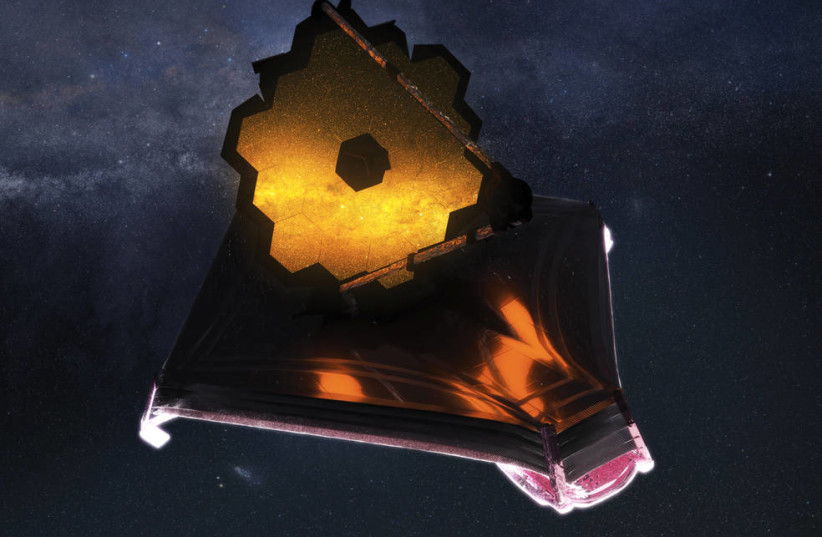Is this the most volatile exoplanet ever seen in space? - study

Exoplanet VHS 1256 b is a gas giant 40 light years away from Earth that orbits a binary star system. Its constant shifts in brightness with its clouds make it the most volatile world ever seen.
A sandstorm is brewing on a young but massive gas giant 40 light years away from Earth, on what researchers are calling the most volatile and constantly shifting planet ever seen, with the largest collection of identified molecules outside the solar system.
The planet was detected by researchers using NASA's James Webb Space Telescope, and the details of the discovery were recently published in a new study.
The large exoplanet in question has been designated VHS 1256 b and it is located in a binary star system, though its orbit is still very far from its stars. Despite this, the burning temperatures in its cloudy atmosphere can still reach 830 degrees Celsius.
The findings of this study were published in the peer-reviewed academic periodical The Astrophysical Journal.
What is this strange new world?
Discovered back in 2016, VHS 1256 b is an exoplanet, meaning it is located outside of the solar system.
At first glance, the fact that a world orbits a binary star system and has sandstorms might bring to mind the desert world of Tattooine from Star Wars. However, the similarities end very quickly.
For one thing, VHS 1256 b is a gas giant, meaning it lacks any ground aside from a solid core, with the rest of the planet being entirely gases and metals trapped in clouds and wind.
In particular, VHS 1256 b is about 20 times larger than Jupiter, the largest planet in our solar system.
But what is interesting about this planet is the fact that its orbit from its stars is very distant – about four times farther than Pluto's orbit from the Sun.
Why does that matter?
With how far this planet is from its stars, it isn't getting much of its own light from its stars. But the light on VHS 1256 b has a peculiar quality: The level of brightness is constantly changing.
Figuring out why this happened is what this study sought to answer.
Studying exoplanets can be very difficult. They are located very far away, many details get obscured by light from the stars or a lack of light and visual information can only tell you so much.
Enter: NASA's James Webb Space Telescope.
The space agency's flagship new space telescope is equipped with several state-of-the-art tools to get a closer and more in-depth look throughout space, giving us new understandings of the greater cosmos.
Most relevant here, though, is the telescope's ability to study atmospheric content. In other words, the James Webb Space Telescope can identify the different elements in a planet's atmosphere, as well as note changes in temperature.
Looking through the telescope – remotely, since the telescope is in space and the researchers are not – the team of researchers led by University of Arizona's Brittany Miles scanned the great swirling clouds on the planet.
These clouds can appear high in the atmosphere and they are filled with silicate grains that may be smokey or just extremely hot sand-like particles. All the while, these clouds constantly shift around, always moving, rising and mixing throughout the planet.
So far, the team has managed to detect water, methane, carbon monoxide and carbon dioxide. These have all been found in other planets outside the solar system, but never all at once.
And it is likely that there is even more information to be gleaned from this mysterious everchanging exoplanet. After all, the molecules may have been identified, but that doesn't necessarily tell you how big the grains of particles in the clouds are. All of this information was gleaned from just a couple of hours of observation.
But why is this exoplanet like this? What makes VHS 1256 b so special, chaotic and volatile?
The answer is likely due to its age.
As far as planets go, VHS 1256 b is very young, just around 150 million years old. Because of that, the planet is still very hot and is still going through changes. As time goes on, specifically as billions of years pass, the planet will likely become cooler and the lay of the metaphorical land will change with it, the atmosphere likely becoming calmer.
In other words, it's just a phase.
But the fact odds are this planet isn't completely unique. There are many bizarre exoplanets throughout the universe, home to a variety of strange features that seem utterly alien to what we have on Earth, such as the exoplanet shaped like a deformed football. But further research with tools like the James Webb Space Telescope can help us make a clearer picture of a currently obscured universe.
Jerusalem Post Store
`; document.getElementById("linkPremium").innerHTML = cont; var divWithLink = document.getElementById("premium-link"); if (divWithLink !== null && divWithLink !== 'undefined') { divWithLink.style.border = "solid 1px #cb0f3e"; divWithLink.style.textAlign = "center"; divWithLink.style.marginBottom = "15px"; divWithLink.style.marginTop = "15px"; divWithLink.style.width = "100%"; divWithLink.style.backgroundColor = "#122952"; divWithLink.style.color = "#ffffff"; divWithLink.style.lineHeight = "1.5"; } } (function (v, i) { });

